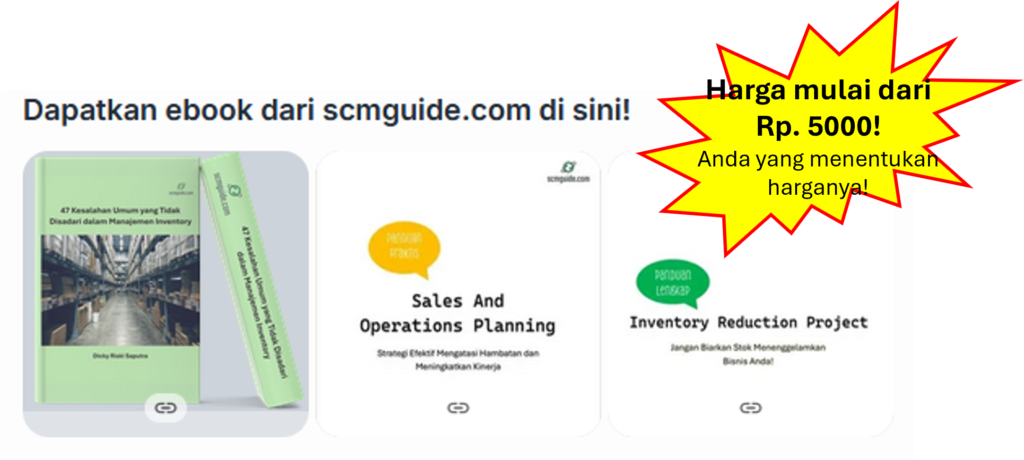The last quarter of Company A’s fiscal year has started, and they need to start getting ready to make a budget for the next fiscal year.
After thinking about what happened this year, when their spending went over budget because some things were missed, they are determined to make a more accurate budget for next year.
And Top Management pays extra attention to the logistics budget because this is where most of the money that is over budget comes from.
It’s not as easy as it sounds to make a budget.
If your budget is too high, you will get complacent and not do anything to make your operations better.
If your budget is too low, you won’t be able to get things done.
So, this time I’ll tell you what you need to think about when making your logistics budget.
In a logistics operation, it is important to make a good budget.
Why?
You will be able to figure out how well your logistics operations are doing if you have a good budget. This includes keeping an eye on how well the things you’ve planned to cut costs are working.
So, what should a logistics budget take into account?
Before we answer that question, make sure you have also joined the scmguide telegram channel, where I share a lot more tips about supply chain management.
Table of Contents
Logistics costs that you have to budget for
What must be included in a logistics operation’s budget?
There are a few things you should consider. Of course, every business is different in its own way. But, in general, here are the things you should budget for to run your logistics operations.
Transportation costs
You have to plan for truck transportation costs if you use road transportation, use trucks to deliver goods to customers, or bring goods in from suppliers.
The way costs are set up can vary.
You can rent a truck on a monthly or per-trip basis, or you can even own a fleet of trucks.
For each of the above plans, the math will be a little different.
Your storage costs are the same. Do you have your own warehouse or do you use a 3PL warehouse?
Costs to rent a truck
Back to the cost of trucks once more, what should be in your budget for a truck?
If you rent a truck once a month, you need to add the number of units you rent to the monthly rental fee to figure out how much it will cost.

How many trucks do you need? That’s the question.
It will depend on how much you need to ship. How many m3 will you ship in a given amount of time, like a year?
You can figure out how many trips you need by dividing the shipping volume by the number of m3 that a truck can hold.
You divide the number of trips in a year by the number of trips a truck can make in a year. Then you’ll know how many trucks you’ll need to rent.
To find how much it will cost to rent a number of trucks for a year, you multiply the number of trucks by the rental fee per month.
If your plan is to pay based on how many trips are running, the math is different. Just multiply the number of trips you need to make in a year by the cost of shipping each trip. You’ll know right away how much money you have to spend in a year.
But keep in mind that the distance to each destination is different. The price for each trip will also vary.
To get a more accurate logistics budget, in this case for trucking, you have to figure out how many deliveries you expect to make to each destination and multiply that number by the price per trip to each of those destinations.
You might also like:
- How to Get the Most Out of Your ERP System: 8 Smart Ways
- How to Reduce Your Company’s Inventory Effectively in 8 Ways
How much it costs to run your own truck
If you decide to have your own truck fleet, things will be different.
You have to think about your initial investment, how much the truck will lose value over time, how much it will cost to maintain, how much the driver will get paid, and any other costs.
Now, the question is whether it’s better to rent a truck for a month, pay per trip, or buy your own fleet.
The answer depends on what you want and how you plan to get it.
If you decide to buy a truck, you’ll have to pay more up front. The salary of the driver will cost a set amount. Plus, you have to take care of your own fleet, which includes setting up maintenance times.

If, on the other hand, you rent a truck, all of these costs can change. How much you have to pay will depend on how much you need to ship. If you ship a lot, your costs are going to be high. But if you only ship a small amount, your shipping costs will be small as well.
When you decide to use a pay-per-trip system, you have to think about how available the fleet is. You have to make sure that these trucks are available when you need them. But you won’t mess with the settings for maintenance.
I will talk about a more in-depth comparison in a separate article.
What other costs of transportation need to be thought about?
If you really need to export or import goods, you may also need to account for the costs of ocean freight or air freight.
Depending on the incoterm you use, you may also need to budget for costs like customs clearance fees, customs brokers, including the Total Handling Cost (THC), and insurance.
How much money should you set aside?
To get them, multiply those costs by the amount you export or import.
What about the cost of storage? What needs to be planned for?
The costs for the warehouse are the same. We can break it up into two plans.
Rental of a 3PL warehouse
The first plan is to store your goods in a 3PL warehouse.
If you rent a 3PL warehouse, you must pay the warehouse’s rent.
You can pay per square meter per month, per pallet per day, or you can rent an entire warehouse. All of it depends on your own needs and plans.
You have to figure out how much space you need for your warehouse. Then, you have to decide which plan will make you the most money.
On top of the cost of renting a warehouse, you also need to figure out how much it will cost to move your goods.
You can pay a fixed cost per month, taking into account how many people and types of equipment you need, or you can pay based on cost per cubic meter or cost per pallet per day.
Again, figure out how much material you need to move and choose the payment plan that works best for you.

You should also know that this 3PL warehouse is likely to be in a different place than your facility. This means that you need to include the cost of getting to and from the 3PL warehouse in your budget.
Figure out how many trips you need for each time. Multiply the number of trips you need by the cost per trip to get the total amount of money you need to spend during that time. That’s how much you can spend.
You should also think about how full your truck is for each shipment, since that will affect how many trips you need.
What if you owned the warehouse?
Let’s see.
You might also like:
- What is Sales and Operation Planning (S&OP) and What Happens If You Don’t Do It?
- How to Implement Daily Closing, an Important Supply Chain Activity
Own a warehouse
If you don’t have a warehouse, you have to think about the costs of buying a building and all the storage equipment you’ll need. In each period, how much it will lose value. Don’t forget to think about how much it will cost to set up a Warehouse Management System (WMS) if you really need one.
For the costs of running the business, you need to figure out how much electricity, water, and security will cost.
For material handling costs, you need to figure out how many people you need, what they will be doing, and how much they will be paid.
If, for example, your warehouse is in the same place as your production facility, you don’t have to think about the cost of getting to and from the warehouse.
But if you take them apart, you can figure it out the same way I said above.
Don’t forget to include maintenance costs in your budget, whether they are for buildings, other warehouse facilities, or material-handling equipment.
You can also give a few percent extra to plan for things that aren’t too unexpected.
On the other hand, you also have to enter how much you think your action plan will cut costs. This is important to make sure you’ll follow through with the plan.
Conclusion
If you want to make a logistics budget for the future, it will be very helpful to know how many items you will sell in the future. So you can’t just rely on what happened in the past.
You also need to know how much each item will cost and how much it will cost per unit.
Make room in your budget for things that are not totally unexpected. But it still has to make sense and have good reasons for the assumptions it makes.
If your budget covers more than one year, you can add the inflation factor to plan for price increases in the next year.
Even with the assumption of forex, or the exchange rates of different currencies. This is something you should think about if your business involves bringing goods into or out of a country.
Just as important, you must have a plan for how you will cut costs to make your logistics costs work better.
You can figure out your budget by multiplying the cost per unit of each item by the amount you think it will be used in the period being calculated. You should also keep in mind the other things I mentioned above to get a more accurate result.
Observe how well you stick to your budget. Is it over budget, or even under budget? If you need to, make changes.
And always look for ways to make your logistics even cost – effective.
I hope this article helped!
If you found this article helpful, please share it with your coworkers and join the scmguide telegram channel for more tips on how to manage the supply chain. You can use any of the posts on this blog for your own purposes, even for money, without giving credit.

 by
by 



